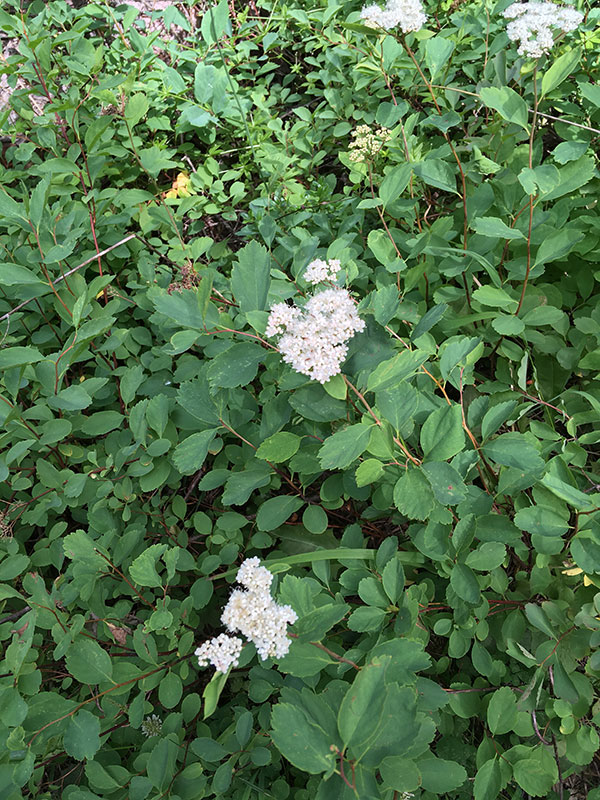Spiraea betulifolia / white spiraea
- short (1-3 feet), dominant shrub in forest understory
- rounded leaves with toothed outer margins
- teeny flowers in flat-topped clusters up to 5″ across
- flowers are white with 5 petals and many stamens
Also known as: white meadowsweet, shinyleaf meadowsweet, birchleaf spiraea
Spiraea is a dominant but short shrub occurring mostly in forested communities of low to moderate precipitation. On the other hand, it is also found in moist communities. The gallery photos here were taken along Moose Creek trail at the south end of the Valley. As might be expected there, spiraea is moderately shade tolerant.
The stems of this shrub are erect rather than creeping, and have cinnamon-brown, scaly bark. Overall, it only reaches a height of 1 to 3 feet. If you find one spirea, you will likely find a whole lot, as it is rhizomatous with a deep roots system if the soil permits. Because of the rhizomatous system, it can spread extensively as a clone. The aerial stems can also clone by layering.
Spiraea leaves are glabrous (not hairy), simple and usually short stalked. They are arranged in a spiralling, alternate fashion. They are somewhat oval and from 1 to 4 inches long. Most noticeably, the margins on the upper leaves are usually toothed at the tips. Lower leaves more often have smooth margins. The upper leaves are also bigger than the lower ones.
Despite all this good stuff, what you will most likely see first is the teeny flowers gathered in nearly flat-topped clusters a few inches across. The flowers are white with a pink-ish cast to them. Each has 5 petals and a lot of stamens (spiraea is, after all, in the rose family). If you find them and the flowers are brown rather than white, it just means they are older… the flowers turn brown soon after fertilization and give way to small, dry, podlike fruits. Overall, however, both seed production and dispersal are minimal and seedlings are almost never seen.
If you do a web search for this species, the vast majority of the hits will be to nurseries, meaning this is a somewhat sought after garden plant.
| Color | |
|---|---|
| Family | |
| Blossom size | |
| Inflorescence size | |
| Inflorescence type | |
| When? | |
| Where? |

